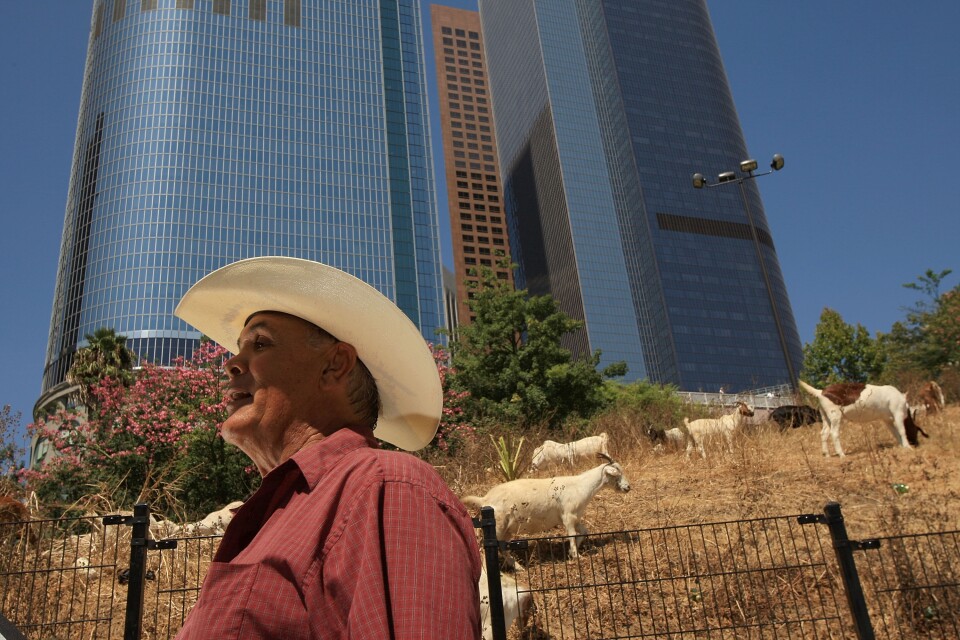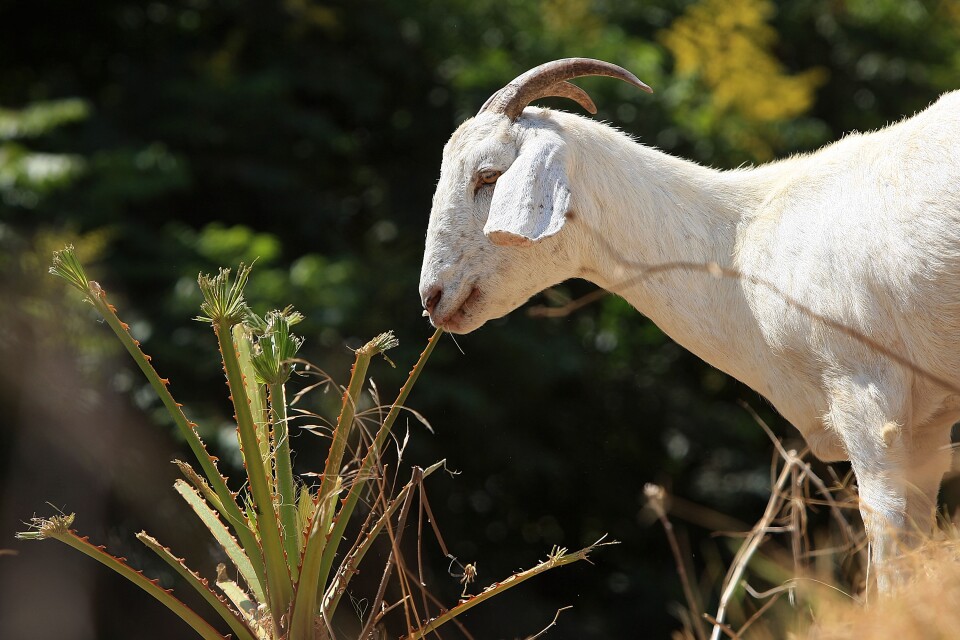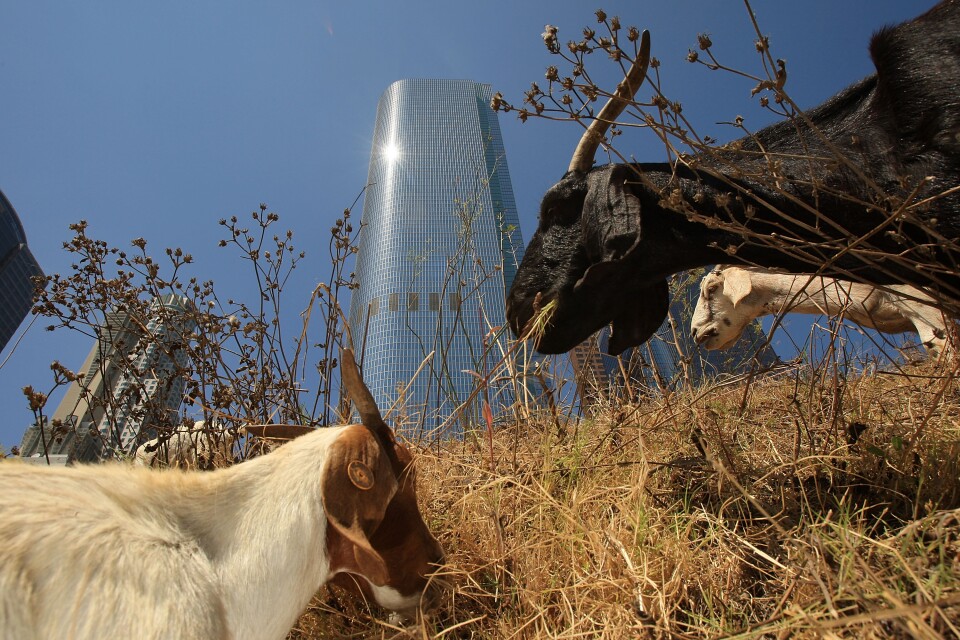What the GOP's healthcare plan could mean for California, Golden State biologists discover why pandas are black and white, new music with Tuesday Reviewsday
3 ways the American Health Care Act would change insurance in California
House Republicans introduced their long-awaited plan to replace the Affordable Care Act yesterday. They're calling it the American Health Care Act.
"This is #ObamaCare gone." - @RepKevinBrady
— Fox News (@FoxNews) March 7, 2017
WATCH highlights from the American Healthcare Act news conference. pic.twitter.com/dDurJ5NcC6
Two committees in the House will begin the process of approving the bill with votes today. But not all Republicans are on board with the bill in its current form.
Obamacare 2.0 https://t.co/p0zKkMD3UT
— Justin Amash (@justinamash) March 6, 2017
So, how could the new GOP plan for healthcare insurance change things for us in California?
To find out, Take Two's A Martinez spoke with Chad Terhune, Senior Correspondent at Kaiser Health News.
1. Medi-Cal expansion phase out

Medi-Cal, the Medicaid program here is massive. It covers 1/3 of all Californians. It covers half of all births in the state. It's a 100 billion dollar program when you put all the state and federal money together. And it has certainly grown under the Affordable Care Act with a big expansion. It's added about 5 million Californians since 2014. And nearly 4 million of those came under the expansion. The expansion was very attractive to states because the federal government was picking up most of the tab. About 95% of the expansion is paid for by the federal government.
This Republican plan would freeze that starting in 2020 and then lower the funding. So, people who got Medi-Cal under the expansion could stay but no new people under the expansion after 2020. Starting in 2020, those people could stay on, but the funding drops. And then eventually, I think the Republican idea is that those people start to drop off the Medi-Cal program as people get jobs they cycle in and out of the program so over time, the overall cost of the program would drop. That's the real focus of the Republicans. They want to slow down the growth of Medicaid nationally and decrease monies that have to go into that program.
2. Restructured premium subsidies
The Affordable Care Act or Obamacare as many people call it, really puts most of the money on a sliding scale. So, people who are lowest income– say people who are $20,000 a year– they get the most help. And then as you go up from there, you get less subsidy.
This Republican plan is really a dramatic reduction in where that money is going– who gets the most help. They opt for a simply, across the board subsidy or tax credit based primarily on age. And it ranges from $2,000 to $4,000 a year. So, if you're 20-years-old, you get about $2,000. If you're in your 40's, you get about $3,000. Up to 60-years-old, you would get $4,000.
Under this new system, some people could lose up to $8,000 to $12,000 a year in premium subsidies... There are winners and losers here but in terms of lower income people and older consumers, they would lose money under the republican plan.
3. Continuous coverage v. mandate

You want as many people in the pool to spread the cost. Healthcare and health insurance is expensive. You want as many people paying into the system as possible so that we can pay for our neighbor who has cancer. OR when we get hit by a bus and land in the hospital. The idea is that no one wants to pay for health insurance so you need a requirement, particularly for those young and healthy people who think nothing's ever going to happen to them. You needed to require them to have health insurance and you needed to have a penalty. So when you filed taxes, you have to pay a penalty if you didn't have health insurance.
A lot of people didn't like that– government telling me what to do. So, Republicans ripped that out. No individual mandate, no penalty. And they've come up with another way to come at it and it's called ‘continuous coverage’. If you don't have coverage for more than 63 days, if you try to come back in, you'll pay a penalty on your health insurance. Not to the IRS, but you would pay 30% more on your health insurance for one year. That would be the new penalty.
*Quotes edited for clarity
To hear the full interview, click on the blue Media Player above.
Trump plan to boost GDP may be at odds with his immigration policy
President Trump promises to soup up the American economy, boosting the nation's annual economic growth to "well over three percent."
That's a stretch. Last year GDP growth was about 1.6 percent. Still, some economists think with the right mix of tax and regulatory reform and some target stimulus - plus a little luck - growth could grow to 3% or more.
Economists argue about the best way to get there, but one thing they mostly agree on - the two key ingredients to growth are productivity, and increasing the size of the labor force.
That second ingredient is where the Trump economic plan may be at cross purposes with the President's immigration policy.
Wall St. Journal economic columnist Gregory Ip tells Take Two that changing demographics could spell trouble if the Trump administration clamps down hard on immigration. Ip notes an aging population, combined with a historically low birth rate, means the American workforce can't grow much on its own. He argues that now, more than any time in recent history, an intelligent infusion of immigrants into the work force could be an effective solution to our slow-growth economy.
Click the blue bar above to listen to the entire interview with the Wall St. Journal's Gregory Ip
Finally, an answer to the age old question: Why are pandas black and white?
Black and white. They've always gone well together.
Think of the keys on a piano, a pair of dice or even a cookie:
https://www.youtube.com/watch?v=RjlW3QCR8Rg
Jerry Seinfeld agrees. Black and white works.
But nowhere else in the world does that combo work better than in the animal kingdom. Orcas, zebras and — arguably the most recognizable black and white critter of all time — the panda! Even though this animal is so beloved, no one has really known why it has its distinctive look.
Until now.
Tim Caro is a biologist in the Wildlife, Fish and Conservation Biology department at the University of California, Davis, and he set out to answer the ever-important question, Why are pandas black and white?
Caro joined A Martinez to discuss what his research found about the giant panda and its monochromatic fur.
Interview Highlights
In a statement about the study, you said:
“Understanding why the giant panda has such striking coloration has been a long-standing problem in biology that has been difficult to tackle because virtually no other mammal has this appearance, making analogies difficult.”
Can you give some context on that?
I think that the issue is that there isn't any other mammal that looks like the giant panda, and so it's not easy to say, "Well, another species has this kind of coloration for such and such reason and therefore it's likely that the giant panda has that, too."
...The breakthrough in this study is that we decided to break up the body parts of the giant panda's external appearance into the face, the belly, the back, the shoulders and the legs. And then, taking each of those parts alone, we could then compare it to many other related species of carnivores."
What did your study find?
What we did is, we looked to see where you find white backs or black legs in other carnivores. And so we looked at variables like temperature, and the giant panda is an interesting species because it moves between different habitats during the course of the year. So, some of the year it's found in snowier backgrounds and some of the year it's found in dark subtropical rain forests.
So, we think that the white and black coloration is a kind of compromise between these two different environments and the animals trying to stay camouflaged against large predators like wolves and tigers in both of these habitats, simultaneously..."
But what about the unique markings on the panda's face?
We were able to determine that the black and white coloration on the side of the body is concerned with camouflage, but that didn't work at all for the face. The black eyes and the black ears seem to be involved with communication between either pandas and other carnivores. Perhaps, the ears signal ferocity...
We certainly think the panda is paying a lot of attention to these large black eye markings on other pandas. These eye markings are very variable in shape and in size and, certainly, when you have an interaction between two pandas and there's possibly a fight going to happen ... if one of the animals wants to back off without getting into a fight, it will cover its eyes with its forepaws so that it hides the shape of its eyes from the dominant opponent.
To hear the full interview, click the blue play button above.
Local goats thrilled with post-rain bounty
This year has gotten off to a wet start, and that means high times for landscaper George Gonzales and his herd of Boer goats.
Rains have made the hills greener, as the vegetation has grown taller. But soon it will be summer and that same brush will dry out, which can lead to some pretty nasty fires.
Sure, one could hire a landscaper to clear the brush, but there's a cuter option out there: goats.

George Gonzalez runs Ranchito Tivo Boer Goats out of Chino Hills. He recently talked with Take Two's A Martinez.
Highlights
How long have you been Southern California's goat man?
I've been in the business of goat prevention for about 15 years. It's like a hobby, but being a Christian person, I use it as a ministry also.
I started with one goat with my stepson. We were doing the fairs, doing trophy work and trying to get a trophy for good-looking animals. And I told my wife, "This is going to cost us $800 a month in alfalfa to keep these animals here." So I figured another way to pay for it was brush clearance.
People think I was kinda crazy, but the thing is, I've been 15-20 years in this business, and it pays its own way.

How did you approach your first client? How did you explain to them how this would help them?
I told them exactly what I tell people now. You may replace this house you've burned down, but you may not replace the souvenirs: your marriage license, pictures of your family. You don't even have a toothbrush when you leave. So you should have fire prevention 200 feet from your house.

We've gotten a lot of rain lately. How does brush this year compare to previous years?
Well, this brush before would be like 2 feet. Now it's about 5 feet tall. In some places, it's even taller than that. It's going to be a danger this year coming. You're gonna have 5 feet of brush around your home. You better get a goat man in there, because it's gonna be really dangerous this year.
Let's take a look at the equipment you're using. I mentioned Boer goats earlier. Is that your goat of choice for this kind of work?
Yes. These goats are from South Africa. They're brush animals, and they weigh about 200 pounds, and they eat all day long. They have four tummies. They will stand the 110-degree heat in the summertime, and they stand on two feet like a deer and eat up into the tree about 5 feet.

No goats were available for comment.
Press the blue bar above to hear the full interview.
(Answers have been edited for clarity and brevity.)
Tuesday Reviewsday: Anna Wise, Henry Wu and the PLAYlist
Tuesday Reviewsday is our weekly new music segment, and this week Morgan Rhodes join A Martinez to talk about the latest releases.
MORGAN'S PICKS
The PLAYlist featuring Glenn Lewis
Album: Chasing Goosebumps
The PLAYlist is the outcrop of DJ/producer DJ Jazzy Jeff. A collective of musicians, singers and songwriters that were brought together for one unusual mission - to inspire, conspire and collaborate on a new album - all in one week.
The result was the new album, Chasing Goosebumps (featuring Glenn Lewis). Morgan reviewed the songs Mr. Grump and this one, Good Time.
Album: Feminine Act: II
Female empowerment is the name of the game on this project brought to us by the uber talented, pseudo new kid on the block Anna Wise. She's a New York–based musician and artist who gained massive attention when she won a Grammy for her work with Kendrick Lamar.
Her new album is called The Feminine Act II. We reviewed the songs, Stacking that Paper and Some Mistakes - but here's another song off the album, Coconuts.
Henry Wu
Album: Deep in the Mudd
South London meets West London as Jamaal Williams aka HENRY WU has put together a six track EP which hearkens back to the sound of late 90's and early 2000 broken beat .




